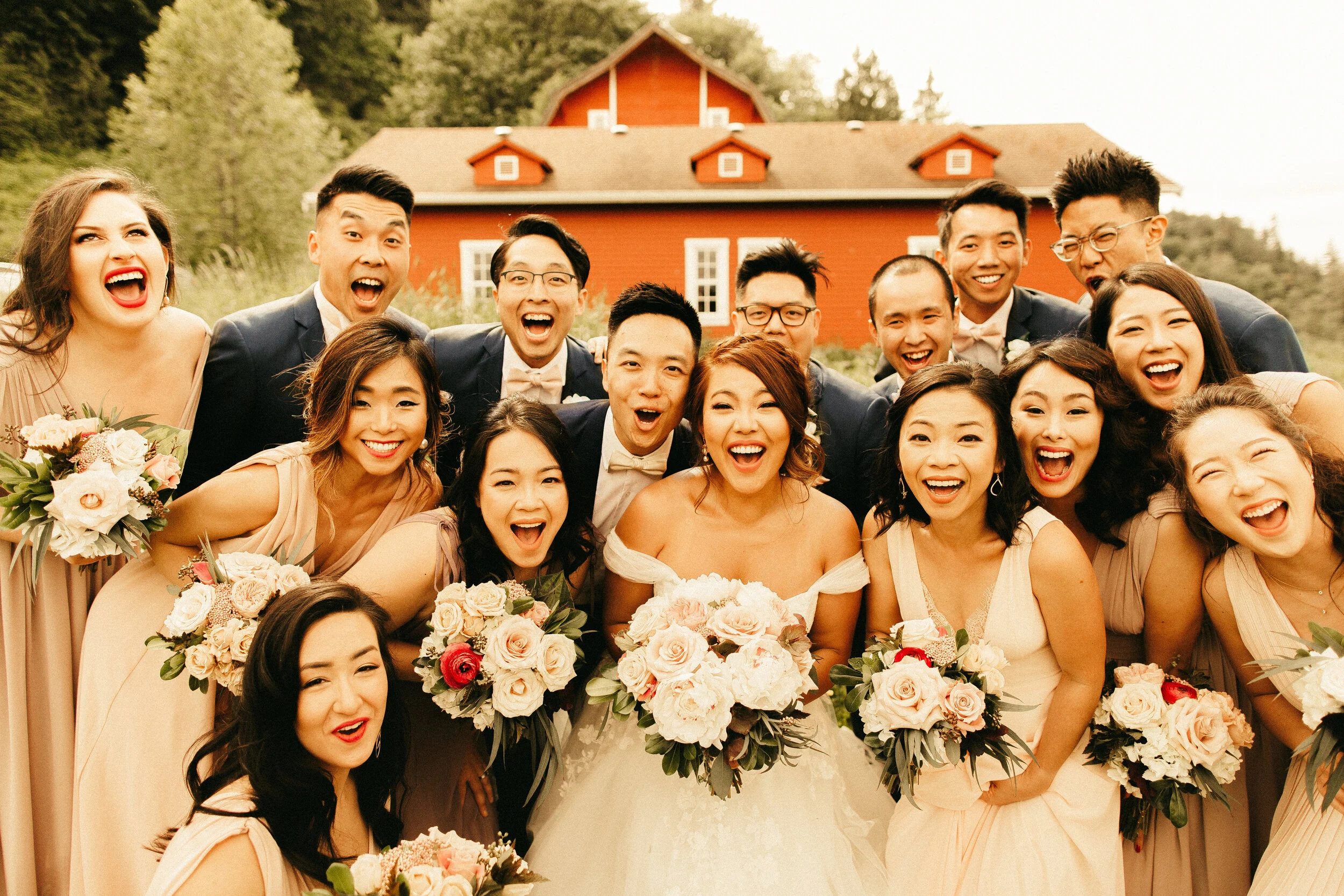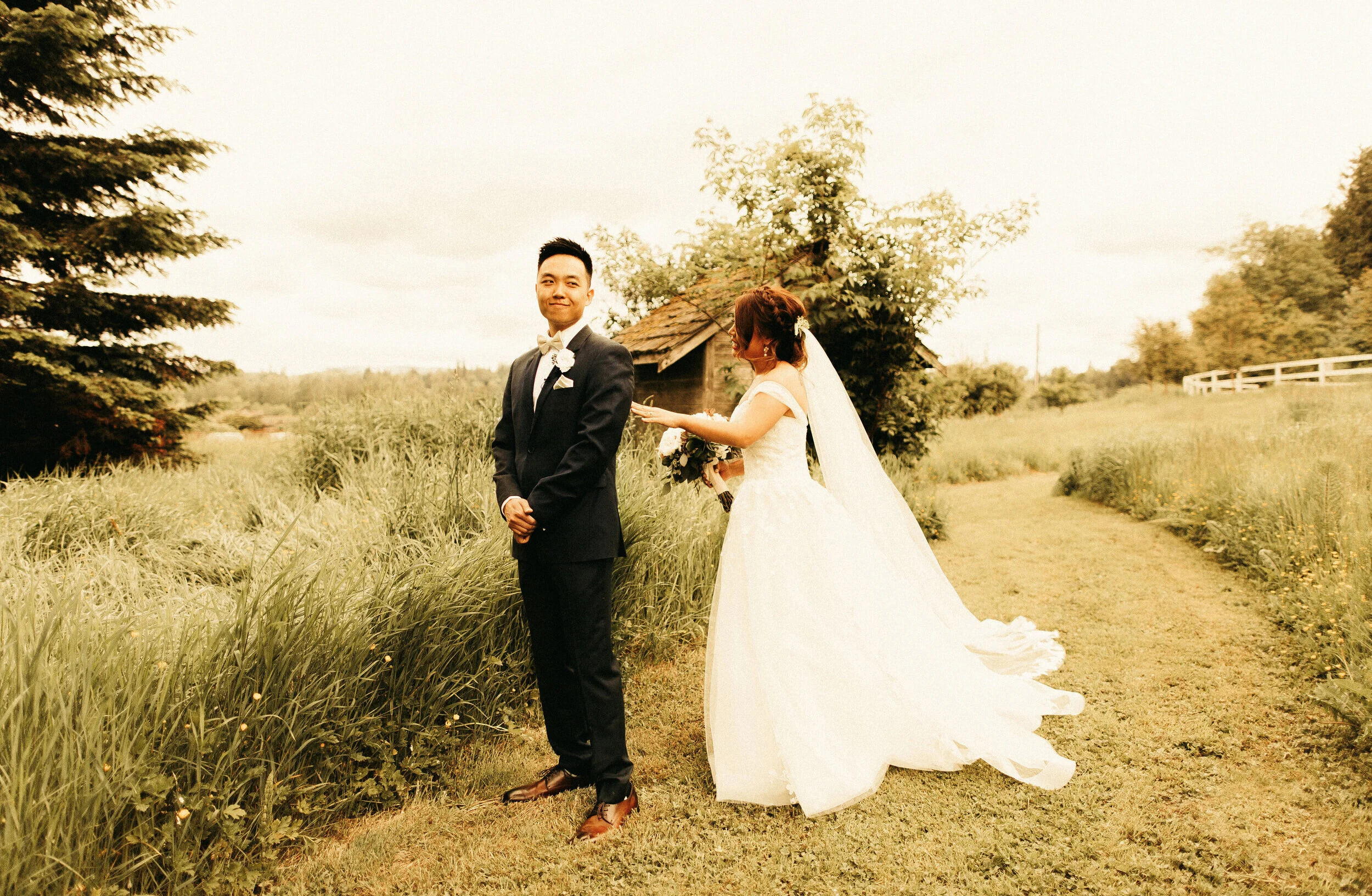How To Discover The Right Size for Your Celebration
Weddings are no longer a one-size-fits-all marathon of traditions. Marriage celebrations come in every shape and format. We crave creative couples and relish constructing purpose-driven celebrations with our clients. Often, we see our lovers getting stuck on the question of the size of their event. How big should my wedding be? How many people should we invite? And who should be invited? There is certainly an art to hosting your celebration, so we are here to provide you with some best practices to help define the “who” of your special day.
FIRST, THINK ABOUT SIZE.
There is an optimal size to call in a certain style of gathering or interaction at your event. So let’s start with a breakdown of the most common group sizes. Groups of six are best for intimate interactions with high levels of sharing and storytelling. If you want your guests to feel an integral part of the same experience, then a group of six is your best bet. It’s a small enough size that everyone is called forward to participate and interact throughout the event and, as a result, walk away feeling connected to each person in the room in some way.
Groups of twelve to fifteen are best for building trust and intimacy. At this size, everyone in the group can offer and receive a diversity of opinion in conversation. We like this size for a dinner party because everyone fits comfortably at a single table. Many of your guests are able to meet each other in small groups during the time preceding a dinner. Guests can break out into a few different conversations at the dinner table, yet all being able to make meaningful eye contact during toasts and share a unifying moment. Keeping your invite list under 15 people is just the ticket for lively and varied conversations, while also being able to generate new connections.
Groups of thirty are when the party really starts cooking. This size creates its own buzz, energy, and sense of possibility (think: Nick Carraway as he approaches Gatsby’s home for the first time… before revealing the hundreds of strangers within). While having a singular group conversation is hard at this size, there is enough diversity for a flow of conversation and interaction throughout a single night. We also like this size for a long weekend getaway with friends and family. There are a few different sub-groups that people can break into throughout a weekend to spend quality time together and get a variety of experiences and conversations. Each generation, family line, political/social interest group, and activity group has enough peers to keep energy and conversation moving over the span of a few days.
Scaling even larger, groups of 100 to 200 people becomes a large group dynamic. Intimacy and trust can still be a palpable quality at this size, while keeping the size away from being an “audience”. We like keeping a gathering under 150 people so that everyone can be seen at the same space at the same time, which lends a unified feel to the event while also offering the opportunity to split up into smaller groups and activities. This size allows those who wish to see and meet everyone there. One hundred fifty people is also Dunbar’s number, or the number of stable friendships that humans can maintain, which is why it feels like a natural number for guest counts to fall around at a wedding event.
What is the style of interaction you want to encourage at your event? Sharing and storytelling? Trusting and intimate? Diverse and energetic conversation? Dynamic and varied? Let that answer be a guide to the size of event you want to hold and don’t be afraid to stand by that decision when your draft invitation list starts to grow. Remember: you start with a draft, then refine it according to your purpose.
SECOND, THINK ABOUT SPACE.
Ideally, you want a contained space that allows people to relax into the alternative world of your event. You can create a contained space with a complete venue rental, by opening up and shutting down areas strategically, or by bringing in props that help define spaces. Moving rooms strategically throughout the evening helps your guests remember different moments or highlighted features better. In whatever space you occupy, you want to make sure that you have a certain level of human density in the room to encourage a group atmosphere. For a dinner party, calculate between fifteen to twenty square feet per person. For a cocktail party, target between ten to twelve square feet per person. For a dance party, think about six to eight square feet per person. For a wedding event, consider whether you will be flipping the same space for multiple purposes, or whether you will be moving between spaces for different purposes, then do the math.
If you’ve already picked your venue, consider why. What was it about the venue that stood out? That you want to highlight? How can you create a flow for your event that encourages guests to interact with that purpose? Don’t like the script that is handed to you? Then think about how you want to shake it up to make better use of the space towards your purpose.
If you haven’t picked your venue, then step away from considerations like cost, convenience, or traffic. While those logistics are a factor, they should not be the driving force behind your decision. You want your space to serve the purpose of your event. The size and set-up of your venue comes with a script, or a way of doing things that people will cause people to fall into a way of being and interacting. Does the space embody your purpose for gathering? Does it evoke the feelings you want your guests to mirror at the event?
Once you’ve established your space, take a look at your invite list. Is the size of your guest list a fit for the purpose and size of your space(s)? Will the guests you’ve written down participate in the purpose behind your event? Will you permit the attendance of purpose-passive guests? Will you create rules at your event that trigger a guest from passive into active participation? Start to filter your guest list into buckets that define which invites feel aligned with the purpose of your event, which are more passive attendees, and which do not align. Don’t be afraid to eliminate those whose attendance will detract from the purpose of your event; they don’t want to be there anyways, so excluding them is a kindness to all parties and participants.
FINALLY, THINK ABOUT HOW YOU WANT TO BUILD COMMUNITY.
As the hosts, you are responsible for the group dynamic. If you are planning a large wedding, we know that statement may feel really big and a little scary. Don’t worry; we have some advice for you. An event can widely be considered successful if, by the end of the night, guests are comfortable introducing themselves to and meeting new people (a.k.a. guest-guest interactions). In order for that to happen successfully and enthusiastically, the hosts have to create inertia by starting the event with a lot of host-guest interactions. Hosts are the most powerful force at their own events and guests often cue off of their actions. Hosts are responsible for walking the walk of what they expect from their guests, knowing that the end result of those actions will create a happy experience for their guests’ future selves. So when hosts are able to lead the event by having lots of guest interactions and creating a format for guest-guest interactions, then a larger event is more likely to be successful.
What does that mean for the wedding world? Well, it means that there is a high burden of social responsibility on the couple for creating a successful event in a large group environment. You can’t just pick your flowers, walk a walk, do a dance, and expect that your wedding event makes everyone feel good at the end of eight hours. Connection doesn’t happen on its own. You have to create your event with the kind of connection you want to make in mind.
We encourage you to think about how you want to make host-guest relationships that set a precedent for intentional guest participation at your event. Will you have one or two smaller events prior to a big wedding to introduce unfamiliar guests to one another and establish guest-guest relationships early? Will you create a game or scavenger hunt that encourages guests to seek new interactions out throughout the night? Will you change the size or style of your event so that you can feel more connected to all of your guests, thereby uniting the group and rippling out meaningful connection to all?
In short: we hope that you toss any old and tired formats for a wedding out the window. While your venue, inherited expectations, and sense of obligation may be trying to hand you scripts for how to throw a wedding event and who to invite, those reasons are not good enough to throw your purpose for your marriage day out the window. Start first by talking about your purpose together. Let it be unique and authentic to who you are and how the day represents your new family culture. We believe that these questions around size, space, and community will help build your event in a meaningful, purpose-driven way. We also know that, if you answer these questions honestly, you will gain some valuable insight into your invite list and generate the power to stand by your purpose in that decision-making process. We can’t wait to hear what you create for yourselves and your guest.
— Kate, Tapestry Event Co. Creative Director
*This article draws from one of our favorite event planning bibles, The Art of Gathering by Priya Parker.







